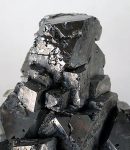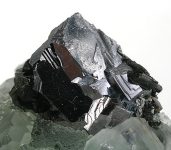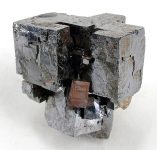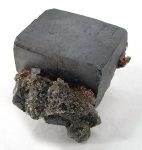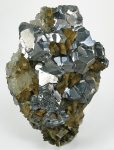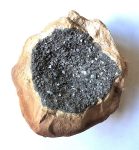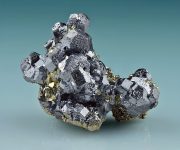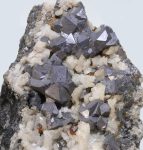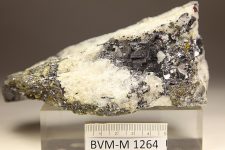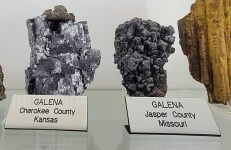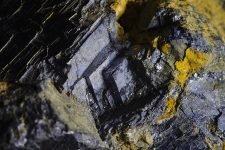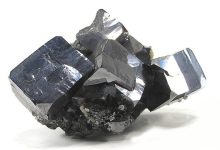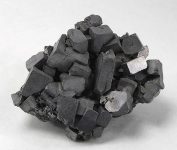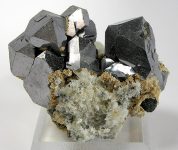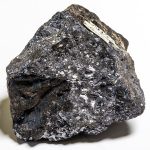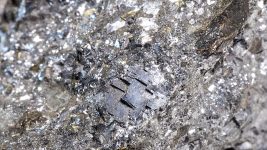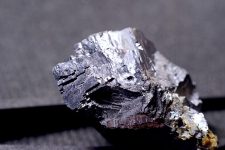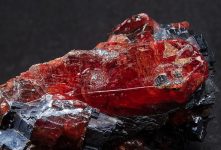Galena
ABOUT GALENA
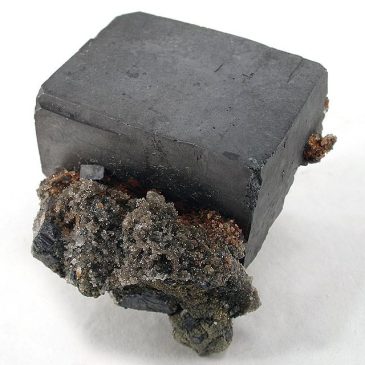
About: Galena is a lead sulfide mineral and the primary ore of lead. It is recognized for its metallic luster and high density. Beyond its industrial importance, galena is a favorite among mineral collectors due to its striking crystal forms and high density. This guide provides an in-depth look at galena’s characteristics, history, sources, uses, and significance.
Mining: Galena is typically extracted through underground mining, although open-pit mining methods are also used. The extraction process involves drilling, blasting, and removing the ore, which is then transported to processing facilities.
Processing: Extracted galena is crushed and ground to liberate the lead and silver sulfides. The ore is then subjected to froth flotation to concentrate the sulfides. The concentrate is smelted to produce lead bullion, which is further refined to obtain high-purity lead and silver.
CHARACTERISTICS

Color: Galena typically appears as a lead-gray or silver-gray mineral.
Chemical Composition: Galena is composed of lead sulfide (PbS).
Density: Galena is very dense, with a density of around 7.5 g/cm³, making it one of the heaviest common minerals.
Crystal Structure: Galena crystallizes in the isometric system, often forming cubic crystals. It can also form octahedral and other complex shapes.
Luster: Galena has a bright metallic luster, giving it a shiny, reflective appearance.
Hardness: Galena has a Mohs hardness of 2.5 to 2.75, which means it is quite soft and can be scratched with a copper coin or fingernail.
HISTORY AND LORE
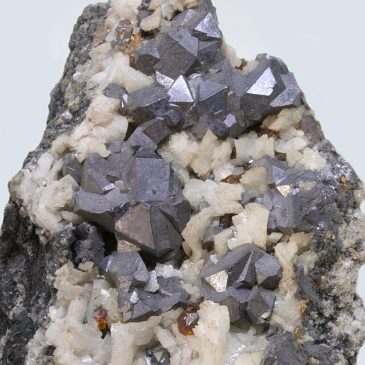
Ancient Civilizations: Galena has been used since ancient times. The Egyptians, Greeks, and Romans mined galena for its lead content. Romans also used finely ground galena as kohl, a cosmetic for eye decoration.
Middle Ages: In the Middle Ages, galena continued to be a significant source of lead, used in plumbing, roofing, and pewter.
Modern Era: Today, galena remains the most important ore of lead, essential for various industrial applications. Its extraction and refining processes have evolved significantly, enhancing efficiency and environmental protection.
SOURCES
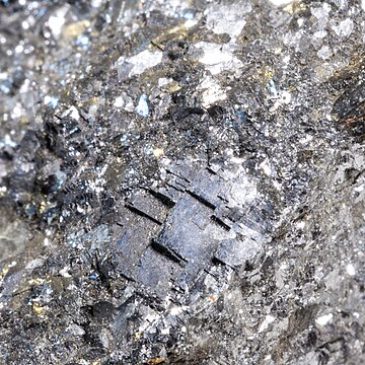
Geographical Locations: Major galena-producing countries include China, Australia, the United States, Peru, and Mexico. Notable mining districts include the Viburnum Trend in Missouri (USA), the Broken Hill region in Australia, and the Leadville District in Colorado (USA).
Geological Formation: Galena forms in a variety of geological settings, including hydrothermal veins, sedimentary deposits, and as a replacement mineral in limestone and dolostone. It is often found associated with minerals such as sphalerite, calcite, and fluorite.
USES
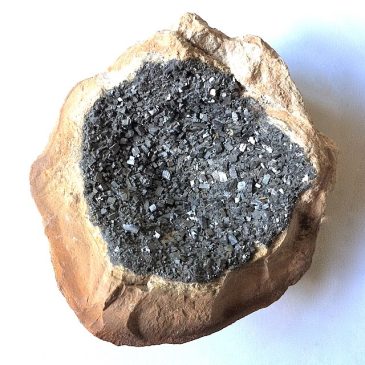
Lead Production: The primary use of galena is as an ore for lead production. Lead is extracted from galena through smelting processes, producing metal used in batteries, radiation shielding, and various alloys.
Silver Production: Many galena deposits contain significant amounts of silver. The silver content is often extracted as a byproduct of lead refining, making galena an important source of this precious metal.
Scientific Research: Galena is studied for its semiconductor properties, making it of interest in scientific research and potential applications in electronic devices.
Decorative Uses: Due to its metallic luster and well-formed crystals, galena is popular among mineral collectors. It is often displayed in museums and private collections.
METAPHYSICAL
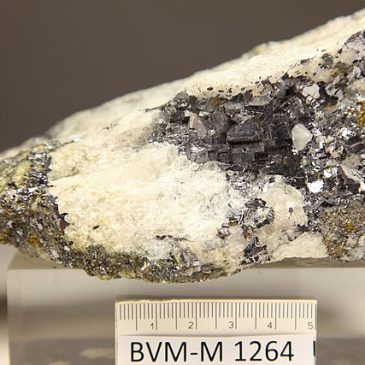
Symbol of Protection: In some cultures, galena is believed to provide protective energy, shielding the user from negative influences.
Historical Usage: The use of galena as kohl in ancient cosmetics highlights its cultural significance in historical societies.
